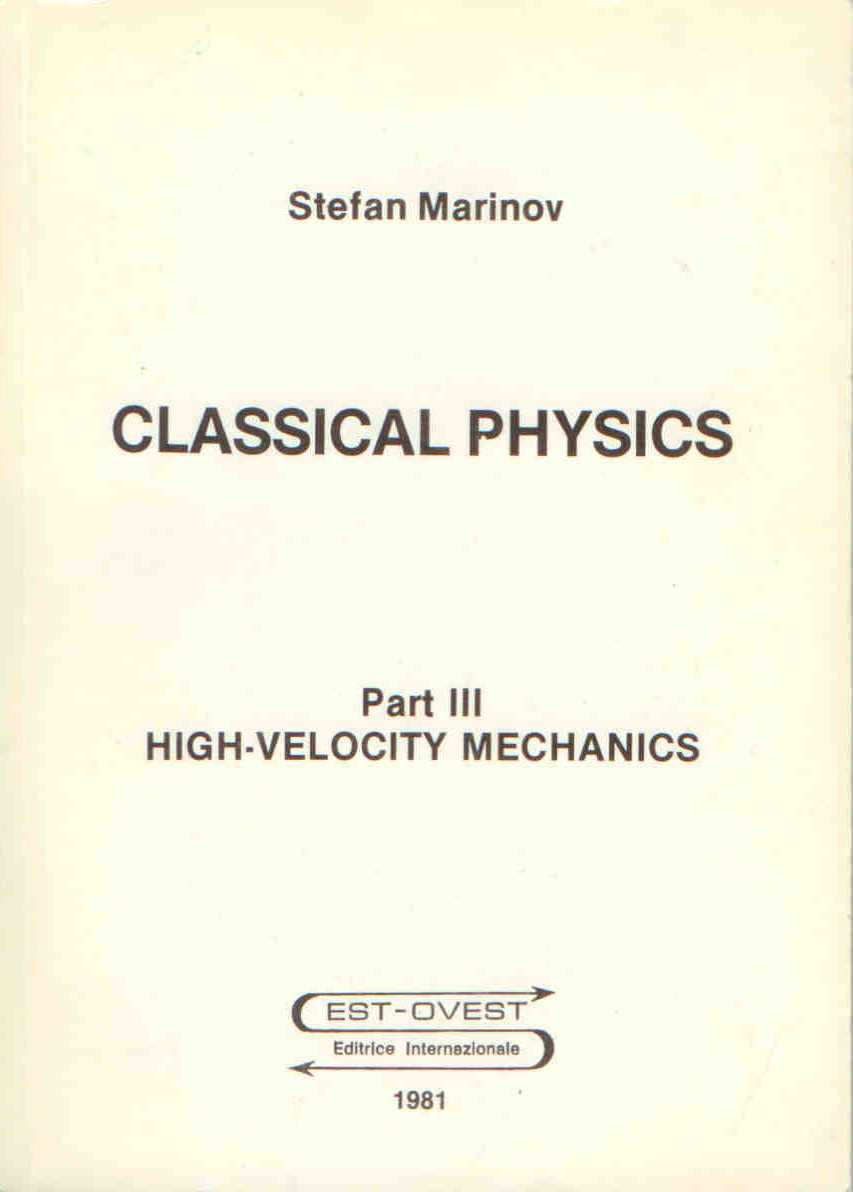Classical Physics, Part III: High-Velocity Mechanics
HIGH-VELOCITY MECHANICS represents Part III of Marinov's encyclopaedic CLASSICAL PHYSICS, which is constructed on the Newtonian notions of absolute space and time. The notion "aether" can be considered exclusively as a synonym to the notion of "absolute space", being defined as the space in which the center of mass of the universe is at rest, or the space in which the velocity of light is isotropic. The fundamental aspects of Marinov's absolute space-time theory are elaborated in Part III. Within effects of first order in v/c Marinov's theory is identical with Newton's theory. The differnces are for effects of second (and higher) order in v/c. Marinov shows that all high-velocity light experiments can be explained if the laboratory velocity of light is taken not in the Newtonian form c' = c - v cos θ, but in the form c' = c2/(c + v cos θ), where θ is the angle between the absolute velocity v of the laboratory and the direction of light propagation Almost half of Part III is dedicated to the analysis of experiments giving confirmation of Marinov's absolute space-time theory. A detailed description is given to Marinov's own numerous experiments, the most important of which is the "coupled-mirror" experiment, with whose help, as the first man in history, in 1973, Marinov succeedes in registering the absolute motion of the Earth in a laboratory; in 1975/76 he measured accurately enough the Sun's absolute velocity, obtaining a magnitude 303 km/sec with equatorial coordinates of the apex: declination -23??, right ascention 14h 17m. This experiment shows in the most direct way that Einstein's principle of relativity is invalid. Very important are also the various Marinov experiments on the rotating disk.



